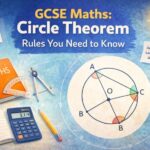GCSE Combined Science is one of the most popular science qualifications for students in the UK. It covers biology, chemistry, and physics in a single GCSE course, giving you a broad understanding of key scientific concepts. Unlike Triple Science, which awards three separate GCSEs, Combined Science is graded as a double award, meaning students receive two GCSE grades based on their overall performance.
This course is offered by AQA, Edexcel, and OCR, each with slightly different combined science grade boundaries and exam formats. No matter which exam board you follow, a solid combined science revision plan is essential to achieving good results. Also, understanding the syllabus, practicing past papers, and knowing how grade boundaries work can help you prepare effectively.
In this guide, we’ll break down everything you need to know about GCSE Combined Science, including topic lists, revision tips, and past paper resources. Whether you’re a student aiming for a high grade or a parent navigating the UK science education system, this blog will give you the tools to succeed!

GCSE Combined Science Exam Boards & Topic Lists
Before you start revising, it’s important to understand the Combined Science GCSE syllabus for your exam board. Each board: AQA, Edexcel, and OCR follows a slightly different structure, but they all cover key topics in GCSE Biology, GCSE Chemistry, and GCSE Physics. Knowing what to expect will help you focus on the right areas during your combined science revision.
AQA GCSE Combined Science Topics
AQA divides the combined science topic list into three sections:
Biology – Cell biology, organisation, infection and response, bioenergetics, homeostasis, inheritance, ecology.
Chemistry – Atomic structure, bonding, quantitative chemistry, chemical changes, energy changes, rate of reaction, organic chemistry, chemical analysis.
Physics – Energy, electricity, particle model, atomic structure, forces, waves, magnetism, space physics (only in physics GCSE).
Edexcel GCSE Combined Science Topics
The Edexcel Combined Science topic list includes similar topics but with a slightly different structure:
Biology – Key concepts, cells and control, genetics, health and disease, ecosystems.
Chemistry – States of matter, chemical reactions, periodic table, fuels, rates of reaction.
Physics – Motion, forces, energy, waves, electromagnetism, radioactivity.
OCR GCSE Combined Science Syllabus
The OCR Combined Science syllabus covers:
Biology – Cell division, digestion, respiration, genetics, evolution, ecosystems.
Chemistry – Atomic structure, periodic table, acids and bases, energy changes, rates of reaction.
Physics – Energy, waves, magnetism, forces, space physics.
Each exam board assesses these topics through written exams, practical assessments, and data analysis questions. Be sure to check your specific syllabus to focus your revision on the correct content.

GCSE Combined Science Grade Boundaries
Additionally, understanding combined science grade boundaries is key to knowing how your final grades are calculated. Unlike separate science GCSEs, GCSE Combined Science awards two GCSE grades, which are based on your overall marks across biology, chemistry, and physics.
So, grade boundaries are the minimum marks needed to achieve a certain grade. They change every year based on the difficulty of the exam and overall student performance. This means a grade 6 one year might require a different mark the next year.
For GCSE Combined Science, you receive a double grade (e.g., 6-6, 5-4, or 7-6). The first number represents your higher grade, while the second reflects the lower grade. Your final grade depends on your total marks across all science papers.
AQA, Edexcel, and OCR Grade Boundaries: How Do They Compare?
Each exam board sets its own grade boundaries based on the papers they set. Here’s how they typically compare:
AQA GCSE Combined Science – Grade boundaries tend to be moderate, with a grade 4-4 often requiring around 130-140 marks out of the total available.
Edexcel GCSE Combined Science – The Edexcel GCSE Combined Science grade boundaries are usually slightly higher than AQA, requiring a few more marks to achieve each grade.
OCR GCSE Combined Science – OCR boundaries can vary each year but are generally similar to Edexcel’s. Some years, they may be slightly lower if exams are more challenging.
For exact grade boundaries, it’s best to check the exam board websites after results day, as they change yearly.
Why Do GCSE Grade Boundaries Change?
Grade boundaries are adjusted based on student performance. If an exam is particularly difficult, the boundaries may be lowered so students are not unfairly penalised. Likewise, if an exam is easier, boundaries might be raised to ensure fair grading.
Knowing past combined science grade boundaries can help you set a target score for your exams. Practicing past papers under timed conditions will give you a good idea of how many marks you need to aim for.

GCSE Combined Science Revision: Best Strategies
Effective GCSE Combined Science revision is all about using the right techniques to help you understand, remember, and apply key concepts. Since Combined Science covers three subjects: biology, chemistry, and physics, it’s important to have a revision plan that keeps you organised and focused. Here are some of the best ways to revise for your exams.
Use Flashcards and Summary Notes
In fact, one of the simplest ways to revise is by creating flashcards and summary notes. Writing key definitions, formulas, and concepts in your own words helps you remember them better. Use flashcards for things like:
- Biology: Cell structures, functions, and key processes like photosynthesis.
- Chemistry: Periodic table trends, bonding types, and chemical reactions.
- Physics: Energy equations, forces, and electromagnetism rules.
Apps like Anki or Quizlet can help you create digital flashcards, making revision quick and effective.
Create Mind Maps for Key Concepts
Mind maps are great for linking ideas together and understanding how different topics connect. Start with a central topic (e.g., “Respiration” in Biology) and branch out into definitions, processes, and equations. This technique works well for:
- Linking topics across biology, chemistry, and physics.
- Understanding complicated processes like the carbon cycle or electrolysis.
- Breaking down long topics into smaller, manageable sections.
Use Active Recall and Past Paper Practice
Instead of just reading notes, test yourself regularly. Active recall involves trying to remember information without looking at your notes. This could be:
- Covering your revision notes and writing down everything you remember.
- Answering practice questions from memory before checking answers.
- Doing past papers under exam conditions to get used to timing and question styles.
Practicing GCSE Combined Science past papers is one of the most effective revision methods. Check AQA, Edexcel, and OCR past papers to familiarise yourself with common questions and mark schemes.
Therefore, the best combined science revision strategy is a mix of different techniques. Use flashcards for memorisation, mind maps for linking ideas, and past papers to get exam-ready. Most importantly, revise regularly and test yourself often!

Where to Find GCSE Combined Science Past Papers?
In fact, practicing GCSE Combined Science past papers is one of the best ways to prepare for your exams. Past papers help you get familiar with question styles, exam timing, and mark schemes. They also show you which topics appear frequently and where you might need to improve.
Where to Download GCSE Combined Science Past Papers
AQA GCSE Combined Science Past Papers
Edexcel GCSE Combined Science Past Papers
OCR Combined Science Past Papers
Most past papers also come with mark schemes, so you can check your answers and understand how marks are awarded.
How to Use Past Papers for Effective Revision
Simply downloading past papers isn’t enough, you need to use them strategically to improve your results. Here’s how:
- Start with Open-Book Practice – Go through a paper, focusing on how questions are structured.
- Time Yourself Like a Real Exam – Set a timer and try to complete a full paper under exam conditions.
- Check the Mark Scheme – Learn how examiners award marks and identify keywords they look for.
- Identify Weak Areas – Track which topics you struggle with and revise them before trying another paper.
- Repeat with Different Papers – The more you practice, the more confident you’ll feel on exam day!
Thus, using GCSE Combined Science past papers is one of the most effective ways to prepare. Whether you’re practicing AQA GCSE Combined Science past papers or revising with OCR Combined Science past papers, be sure to go over mark schemes and examiner reports to understand where you can improve.
GCSE Combined Science Exam Techniques & Time Management – How to Approach the Exam Effectively
Success in GCSE Combined Science isn’t just about revision, it’s also about how you handle the exam itself. Proper exam techniques and time management can make a huge difference in maximizing your marks and avoiding unnecessary mistakes.
First, read each question carefully, paying attention to key command words like “describe,” “explain,” and “evaluate.” Many students lose marks by misinterpreting what the question is actually asking. Underline key terms and ensure you answer every part of the question. In structured questions, keep your answers clear and concise, using scientific terminology to demonstrate your understanding. For calculation-based questions, always show your working, as marks are often awarded for the correct method even if the final answer is wrong.
Then, for the multiple-choice and short-answer sections, avoid rushing. Even if an answer seems obvious, double-check it to ensure there are no tricky wording issues. For longer extended-response questions, structure your answer logically, providing clear points with evidence. In questions requiring practical knowledge, refer to correct experimental techniques, variables, and safety precautions to maximise your score.
Lastly, use the final minutes to review your answers, ensuring calculations are correct, units are included where needed, and any skipped questions are completed.
GCSE Combined Science vs. Triple Science vs. BTEC Science
When choosing a science qualification, students often compare GCSE Combined Science and GCSE Triple Science, but another option to consider is BTEC Science. GCSE Combined Science is a double-award GCSE, covering Biology, Chemistry, and Physics but awarding two GCSE grades instead of three. Often referred to as Double Science GCSE, this option provides a solid foundation for further science study without the extra depth of Triple Science, which gives students three separate GCSEs in Biology, Chemistry, and Physics.
Triple Science is ideal for those interested in science-heavy careers, such as medicine, engineering, or research, as it covers more advanced topics. On the other hand, BTEC Science is a more coursework-based qualification, often chosen by students who prefer practical assessments over traditional exams. Unlike GCSE Science, which is exam-focused, BTEC Science involves ongoing assessment through assignments, projects, and practical work. While BTEC Science can still lead to A-Levels and further study, GCSEs are usually preferred for highly competitive science careers.
GCSE Combined Science vs. Triple Science vs. BTEC Science
| Criteria | GCSE Combined Science | GCSE Triple Science | BTEC Science |
| GCSEs Awarded | 2 GCSEs | 3 GCSEs | 1-2 GCSEs (Equivalent) |
| Subjects Covered | Biology, Chemistry, Physics | Biology, Chemistry, Physics | Applied Biology, Chemistry, Physics |
| Depth | Moderate, general science knowledge | In-depth, separate GCSEs for each | Practical-focused, less theory-heavy |
| Assessment | Exams (written papers) | Exams (written papers) | Coursework, practical work, some exams |
| Best for... | Balanced workload, general science interest | Science-heavy careers (medicine, engineering, research) | Students who prefer coursework over exams |
| Further Study | Can progress to A-Levels but may need extra preparation | Ideal for A-Levels & science-related university courses | Leads to A-Levels or vocational routes, less preferred for competitive science degrees |
Conclusion
GCSE Combined Science is a valuable qualification that provides a broad understanding of biology, chemistry, and physics, helping students develop essential scientific knowledge and skills. Whether you’re following the AQA, Edexcel, or OCR syllabus, the key to success lies in effective revision, smart exam techniques, and confident time management. By practicing past papers, mastering scientific terminology, and using structured revision strategies, you can improve your understanding and maximise your grades. These same revision principles will serve you well if you continue with A-level Science studies.
Choosing between GCSE Combined Science, Triple Science, or BTEC Science depends on your interests, future career goals, and preferred learning style. Combined Science offers a balanced approach, while Triple Science provides greater depth, making it ideal for students considering science-related careers. BTEC Science, on the other hand, focuses on practical coursework, which may suit those who prefer continuous assessment over final exams. Regardless of the path you choose, the right preparation and study techniques are crucial to achieving the best results.
Understanding how Combined Science is graded, knowing how many science GCSE papers there are, and keeping up to date with Combined Science grade boundaries Edexcel or other boards will give you the confidence to plan your studies effectively.
For students looking for extra support, our Edumentors online GCSE tutors can provide personalised guidance and help strengthen weaker areas in science. Whether you need help with specific topics, exam techniques, or revision planning, having expert support can make a significant difference in your confidence and performance.
Stay focused, trust in your preparation, and approach your exams with confidence. With the right mindset and study plan, you have everything you need to succeed in GCSE Combined Science. Keep pushing forward, aim high, and achieve the grades you deserve!
FAQs:
What is Combined Science GCSE?
Combined Science is a GCSE course that covers the basics of biology, chemistry, and physics in a balanced way. It’s slightly less in-depth than taking the sciences separately.
What is a pass in Combined Science GCSE?
A grade 4-4 is considered a standard pass. A grade 5-5 is a strong pass.
Is Combined Science one GCSE?
No, it counts as two GCSEs and is awarded with a double grade (e.g., 6-5, 5-5, or 4-3).
Is GCSE Combined Science hard?
It can be challenging, but it’s designed to be manageable with regular revision and practice. It covers key topics from biology, chemistry, and physics.
How many papers are there in GCSE Combined Science?
There are six exam papers in total-two for each science: biology, chemistry, and physics.








